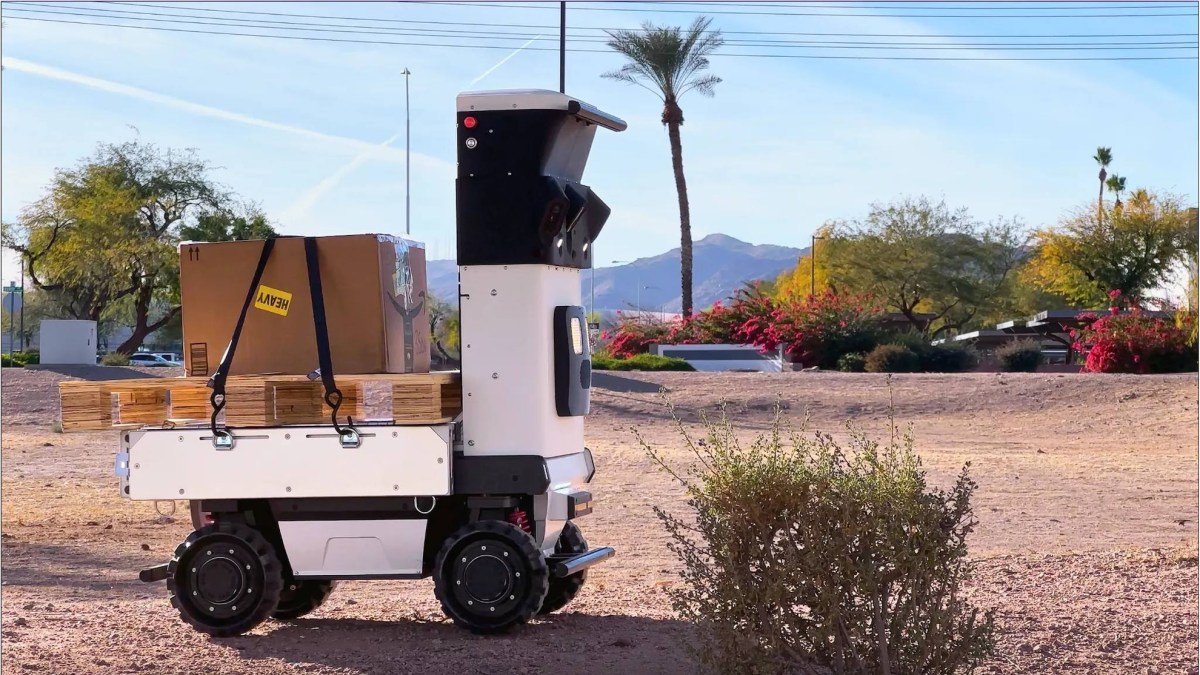Cartken Shifts Focus: From Food Delivery to Industrial Robotics
Autonomous robotics startup Cartken, recognized for its innovative food delivery robots operating on college campuses and in Tokyo, is now venturing into the industrial sector.
Identifying Industrial Opportunities
Christian Bersch, co-founder and CEO of Cartken, shared with TechCrunch that the idea to adapt delivery robots for industrial applications was a consideration from the startup’s inception. As companies began expressing interest, Cartken explored this new avenue further.
Revealing Market Demand
“We discovered a significant need for onsite industrial solutions,” Bersch, a former Google engineer behind the Bookbot project, explained. “Companies could benefit from optimizing material and production flows.”
Initial Success with ZF Lifetec
In 2023, Cartken secured its first major industrial client, ZF Lifetec, a German manufacturer. Initially, ZF utilized Cartken’s existing delivery robot, the Courier, which can carry up to 44 pounds and resembles a wheeled cooler.
Transitioning Robots to Industrial Use
“Our food delivery robot started transporting production samples, quickly becoming our busiest unit,” Bersch said. “This success made us realize the viable market need, prompting us to target this sector more aggressively.”
Ongoing Food Delivery Partnerships
While Cartken continues to expand its sidewalk delivery business—with partnerships with Uber Eats and GrubHub for last-mile operations in U.S. colleges and Japan—its industrial success encouraged a broader business model exploration.
Seamless Adaptation to Industrial Settings
Bersch noted that adapting the robots for industrial roles was straightforward. The AI, trained on years of food delivery data, allows the robots to navigate diverse terrains and weather conditions.

Expanding the Robot Fleet
Having raised over $20 million from investors such as 468 Capital and Incubate Fund, Cartken is expanding its robotic fleet to cater to industrial needs. Earlier this year, it launched the Cartken Hauler, capable of carrying up to 660 pounds, as well as the Cartken Runner for indoor deliveries and plans for a robotic forklift.
Advanced Navigation and Flexibility
Bersch stated, “Our navigation system is customizable for different robot sizes, and the AI from food delivery is directly applicable to these new models.”
Deepening Partnerships with Mitsubishi
Recently, Cartken reinforced its partnership with Mitsubishi, which had initially helped in obtaining necessary certifications for its delivery robots in Tokyo. Melco Mobility Solutions, a Mitsubishi subsidiary, is set to acquire nearly 100 Cartken Hauler robots for Japanese industrial applications.
Broader Applications in Various Industries
“We see growing interest from diverse industrial sectors, including automotive, pharmaceuticals, and chemicals,” Bersch noted. “These companies often need to transport items between buildings, traditionally done by hand or with small forklifts—this is where we come in.”
Future of Food Delivery
While Cartken will maintain its food and consumer last-mile delivery services, Bersch indicated that expansion in this area isn’t in the immediate plans, emphasizing ongoing testing of new features within existing last-mile delivery routes.
Sure! Here are five FAQs regarding Cartken’s shift from last-mile delivery to industrial robots:
FAQ 1: Why did Cartken pivot from last-mile delivery to industrial robots?
Answer: Cartken identified that while last-mile delivery was a growing sector, the increasing demand for industrial automation offered a broader market opportunity. By focusing on industrial robots, they can leverage their technology to serve various industries, leading to increased efficiency and new applications.
FAQ 2: What advantages does Cartken see in industrial robots compared to last-mile delivery?
Answer: Industrial robots can enhance operational efficiency, reduce labor costs, and improve safety in manufacturing and warehousing environments. The scalability and adaptability of these robots allow Cartken to address a wider range of industrial challenges, making this pivot strategically advantageous.
FAQ 3: How does this pivot align with broader industry trends?
Answer: The global push for automation and digital transformation in industries is rapidly increasing. By moving into industrial robotics, Cartken aligns itself with this trend, ensuring it remains competitive and relevant, while catering to businesses seeking to automate and optimize their operations.
FAQ 4: Will Cartken still engage in last-mile delivery or focus solely on industrial robots?
Answer: While Cartken’s primary focus has shifted to industrial robotics, they may still explore opportunities in last-mile delivery if synergies arise. The pivot, however, indicates a strong commitment to capitalizing on the growth and potential of the industrial sector.
FAQ 5: What types of industries can benefit from Cartken’s industrial robots?
Answer: Cartken’s industrial robots are designed for a variety of sectors, including manufacturing, logistics, and warehousing. They can be utilized for tasks such as material handling, assembly, and inventory management, offering diverse applications across different industrial settings.


No comment yet, add your voice below!